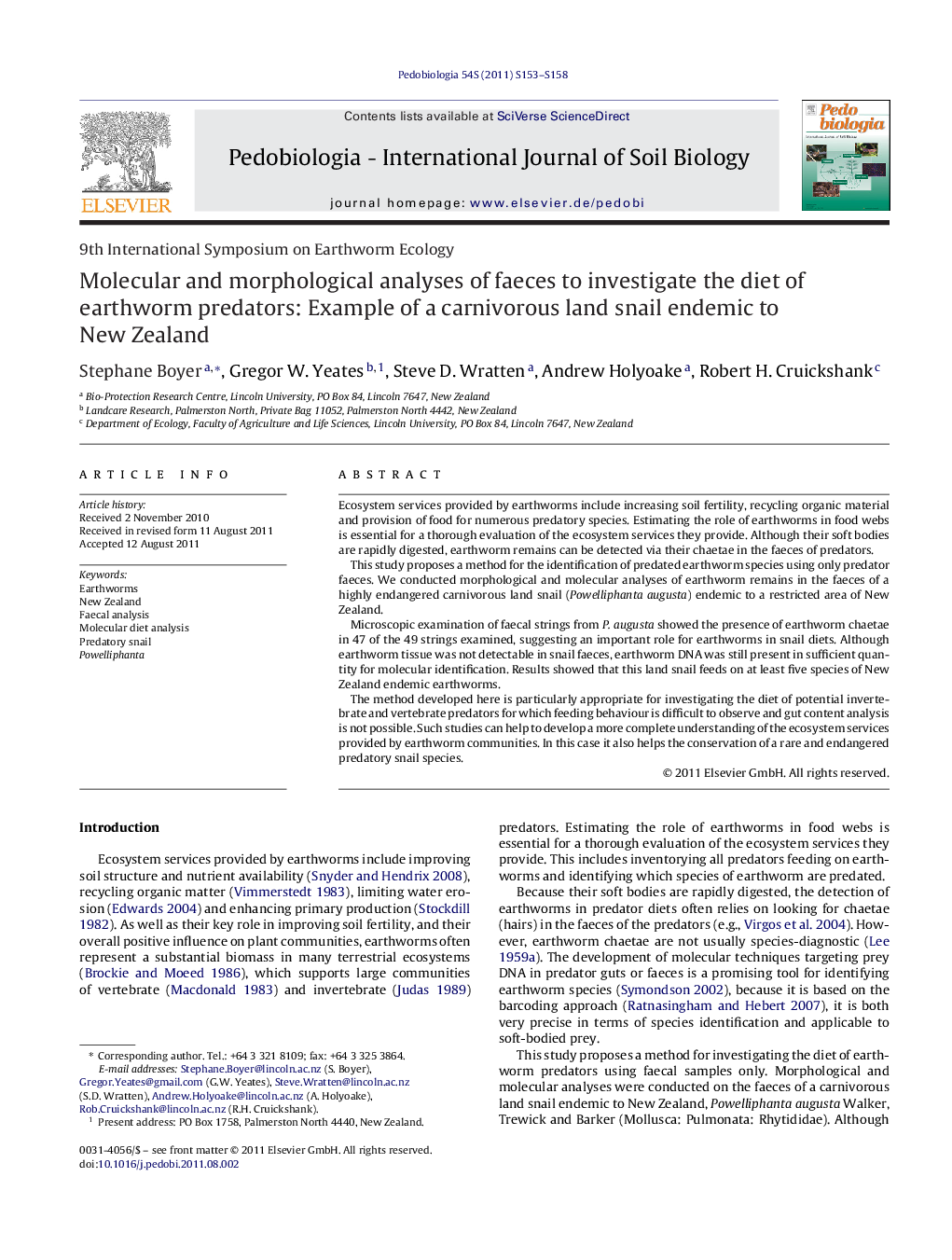| Article ID | Journal | Published Year | Pages | File Type |
|---|---|---|---|---|
| 2061305 | Pedobiologia | 2011 | 6 Pages |
Ecosystem services provided by earthworms include increasing soil fertility, recycling organic material and provision of food for numerous predatory species. Estimating the role of earthworms in food webs is essential for a thorough evaluation of the ecosystem services they provide. Although their soft bodies are rapidly digested, earthworm remains can be detected via their chaetae in the faeces of predators.This study proposes a method for the identification of predated earthworm species using only predator faeces. We conducted morphological and molecular analyses of earthworm remains in the faeces of a highly endangered carnivorous land snail (Powelliphanta augusta) endemic to a restricted area of New Zealand.Microscopic examination of faecal strings from P. augusta showed the presence of earthworm chaetae in 47 of the 49 strings examined, suggesting an important role for earthworms in snail diets. Although earthworm tissue was not detectable in snail faeces, earthworm DNA was still present in sufficient quantity for molecular identification. Results showed that this land snail feeds on at least five species of New Zealand endemic earthworms.The method developed here is particularly appropriate for investigating the diet of potential invertebrate and vertebrate predators for which feeding behaviour is difficult to observe and gut content analysis is not possible. Such studies can help to develop a more complete understanding of the ecosystem services provided by earthworm communities. In this case it also helps the conservation of a rare and endangered predatory snail species.
